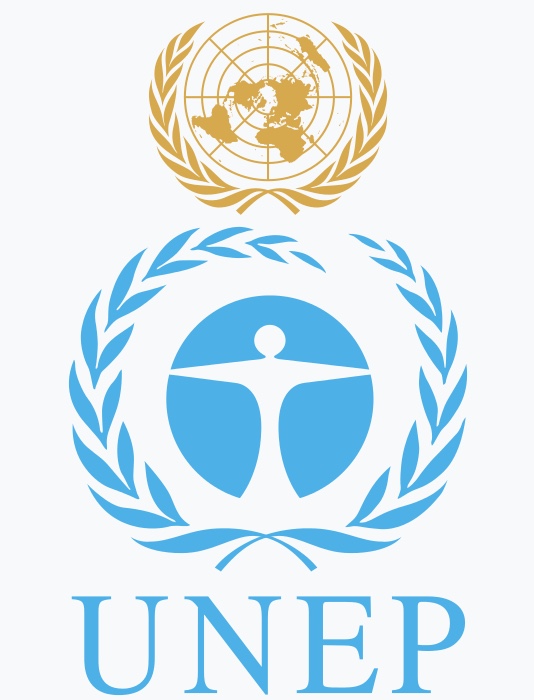By Janet Ekstract February 13, 2018
UNITED NATIONS (TURKISH JOURNAL) – The United Nations Environment Program (UNEP) in its most recent report, warned of the current “three-kilometer, thick brown cloud of man-made pollution,” extending from the Arabian Peninsula and China to the Western Pacific Ocean.
The report stated that the “brown cloud” is “making Asian cities darker, speeding up the melting of Himalayan glaciers and impacting human health.” The study, released today in Beijing, highlights the devastating effects that Atmospheric Brown Clouds (ABCs) are having on the environment at large and the populations that inhabit those environments.
According to the report, those clouds do not reveal the actual impact of global warming’s true effects. The study contends that between twenty to eighty percent of warming is disguised by the presence of those ABC’s and that they consist of a mixture of dangerous sulphates, and a host of other chemicals that reflect sunlight and cool the surface, making the climate appear cooler than it really it is.
Skyrocketing changes in weather patterns are taking place at alarming rates the experts revealed in the report, and this is causing major dry spells in northern China while also increasing flood risks in the south of China.
In the report, this effect is described as an “artificial lowering of temperature by ABC’s” with monsoon precipitation over India and Southeast Asia dropping by as much as seven percent since the 1950s with the summer monsoon pattern, weakening and even decreasing.
The implications are obvious: serious drought that can directly damage the livelihood of predominantly agricultural states, nations and provinces over the long term while posing life threatening health risks such as asthma, emphysema and lung cancer.
In the meantime, the food security and health of three billion people are at risk in Asia because of widespread and ubiquitous ABC’s, the report notes.
UNEP Executive Director, Achim Steiner, expressed his hope that the “Atmospheric Brown Clouds: Regional Assessment Report with Focus on Asia” will be a wake-up call that the international community will urgently address in the shortest possible time frame.
Mr. Steiner is warning more developed nations to assist less developed countries to obtain the technology necessary to expand and develop “green economic growth.”
Most certainly, this will require a definite plan and concerted effort though and that means more unification and extended communication between governmental bodies and nations with the sole intent of drastically reducing the “greenhouse effect.”
The facts demonstrate that the dire consequences of climate change have reached epic proportions and have spread to just about every nation in the world at a more rapid pace than was expected.
In order to combat this very rapid scourge, the UNEP executive director stated that by developed nations reaching out to underdeveloped ones, the road to climate change recovery becomes possible.
In his statement to the media, Mr. Steiner commented: “In doing so, they cannot only lift the threat of climate change but also turn off the soot-stream that is feeding the formation of atmospheric brown clouds in many of the world’s regions.”
This new environmental impact report targets thirteen megacities that it states are ABC “hotspots”: Bangkok, Beijing, Cairo, Dhaka, Karachi, Kolkata (Calcutta), Lagos, Mumbai, New Delhi, Seoul, Shanghai, Shenzhen and Tehran. The study research found that ten percent of the total mass of all man-made particles in these cities is contained in their overall soot levels.
The UNEP report also reveals that ever since the 1970s, the Chinese city of Guangzhou, in addition to others, has experienced the environmental phenomenon of “dimming,” otherwise known as a reduction of sunlight, of more than twenty percent.
With the ABC’s affecting the solar heating of the atmosphere, the study states this is “suggested to be as important as greenhouse gas warming in accounting for the anomalously large warming trend observed in the elevated regions.” These “brown clouds” also contain toxic materials that include carcinogens, aerosols and a variety of other dangerous particles which have been implicated in respiratory and cardiovascular diseases.
In addition, the research found that the Himalayan-Tibetan region has been majorly affected while this climate change effect has led to an alarming, rapid decrease in glaciers
The UNEP report also warns of potential massive crop losses of up to forty percent in Asia if ground-level ozone rises, which could wreak havoc with food production and the livelihood of farmers throughout the region.
The report calls for additional research to be carried out on the effects of ABCs, scientists who participated in the study, stated. The study, produced by the UNEP Project Atmospheric Brown Cloud emphasize that brown clouds exist in parts of North America, Europe, Southern Africa and the Amazon Basin.
In the report’s final analysis, all of these climate change effects require urgent, detailed research. More crucial, though is that whole populations and especially governmental entities and NGOs must do their part to raise awareness of this rapidly changing environmental impact as well as acknowledge the increased effect that climate change has already had around the globe. This situation will continue to escalate unless organizations and nations take the essential steps necessary to put the brakes on what could become an uninhabitable earth in the not too distant future.




